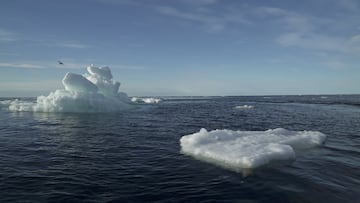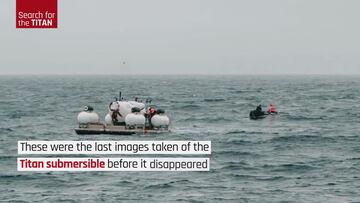TITANIC
The book that predicted Titanic disaster: a fictional ship called Titan
In April 1912, the RMS Titanic sank in the Atlantic Ocean. Just over a decade earlier, Morgan Robertson’s novel told the story of a strikingly similar tragedy.

A little over a century ago, the RMS Titanic, at the time one of the largest ships ever built, sank in the North Atlantic Ocean, in one of the highest-profile maritime disasters in history.
The tragedy, which took place in the early hours of 15 April 1912, saw 1,496 of the 2,208 people on board lose their lives. The wreckage of the ship, which is now back in the news for all the wrong reasons, sits at a depth of nearly 4,000 metres below the surface, close to Newfoundland.
Travelling from Southampton to New York, the Titanic was making its maiden voyage. Considered to be “unsinkable”, the White Star Line vessel collided with an iceberg four days after setting sail from the UK, tearing a hole in its starboard side. It took just a few hours to sink.
‘Futility’, the book that foresaw the disaster
In 1898, just 14 years before the Titanic disaster, the writer Morgan Robertson wrote the novel ‘Futility, or the Wreck of the Titan’, a book that tells the story of a fictional ship whose sinking bears several similarities with real-life events in 1912.
See also:
Similarities and differences between Titanic and ‘Futility’
The first, and most striking, similarity relates to the ships’ names, given that Robertson opted to named his craft the Titan.
Both the Titan and the Titanic collided with an iceberg on their starboard side on a cold night in April, some 900 miles from New York. While the fictional tragedy takes place in adverse conditions, however, the Titanic was sailing in normal weather.
The Titan was travelling from New York to Southampton; the Titanic, in the opposite direction. Both had been dubbed “unsinkable”. While the former sank in a matter of minutes, the Titanic held out for around three hours after hitting the iceberg.
In ‘Futility’, the Titan has a capacity of 3,000 passengers, of which only 13 made it off the ship alive. Thankfully, that near-0% survival rate was not replicated in the sinking of the Titanic.
In both cases, the ships were designed according to a system of watertight compartments. What’s more, the Titan was just over 880 feet in length, very similar in size to the 800-foot-long Titanic. Both liners had three propellers and two masts.
Titan submersible search: live updates
On Sunday, contact was lost with a submersible - also called the Titan - some two hours after it set off on a dive towards the remains of the Titanic. Operated by the company OceanGate, the vessel has five people on board.
Video - The final images of the Titan before it disappeared:






